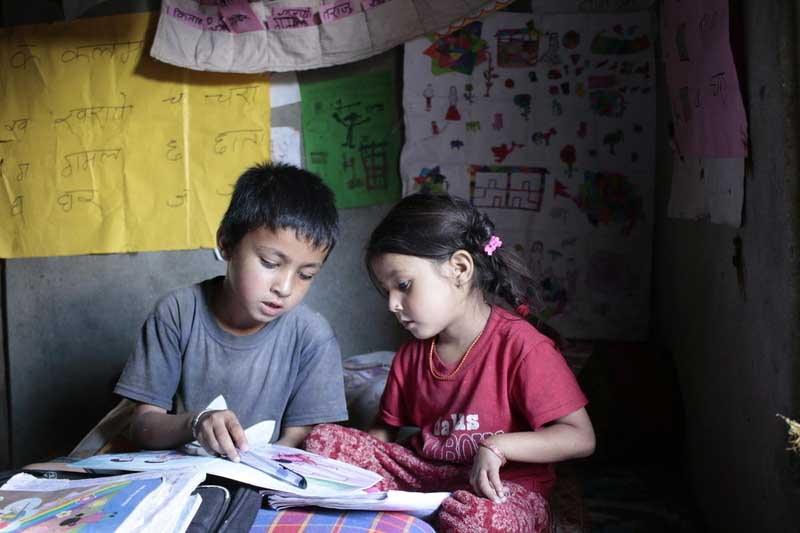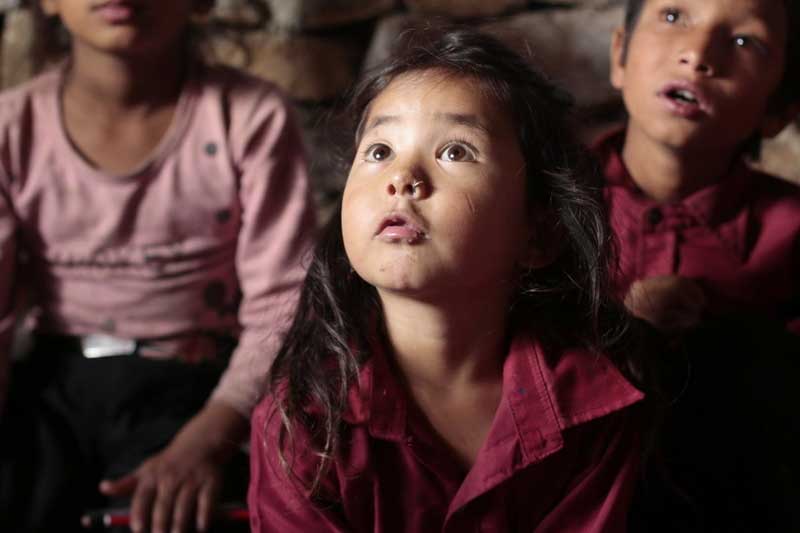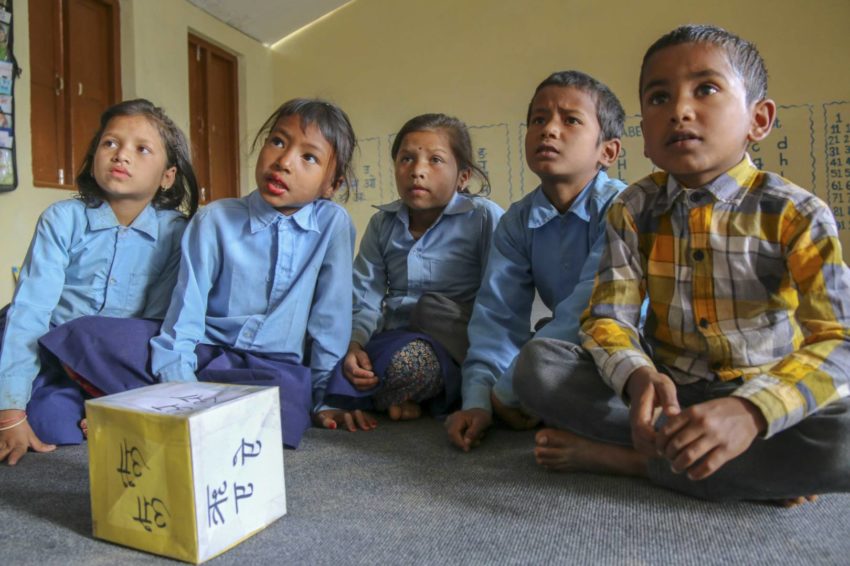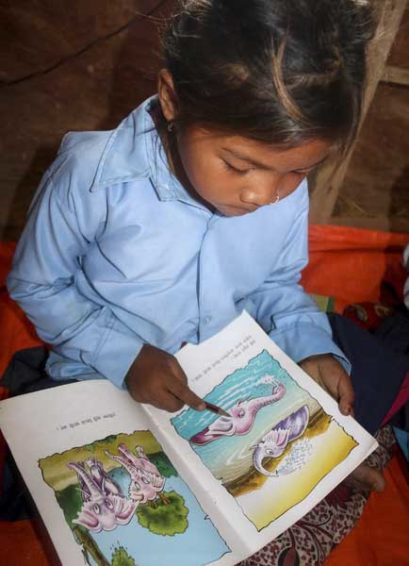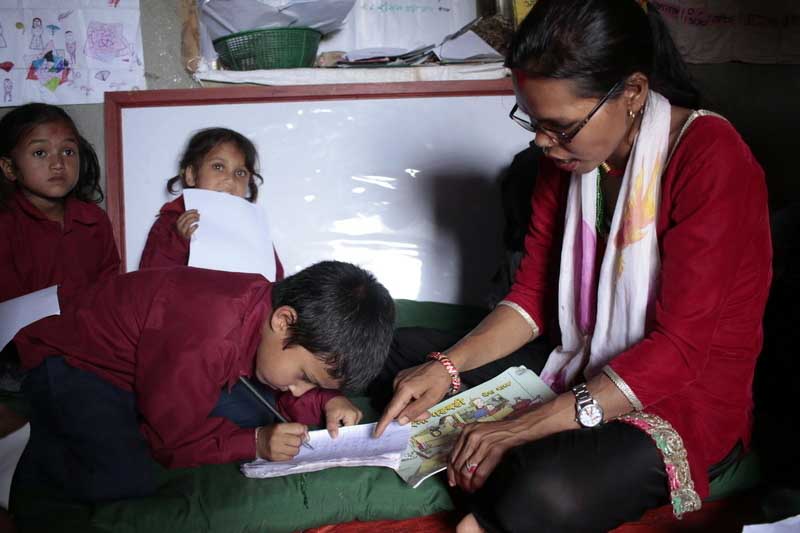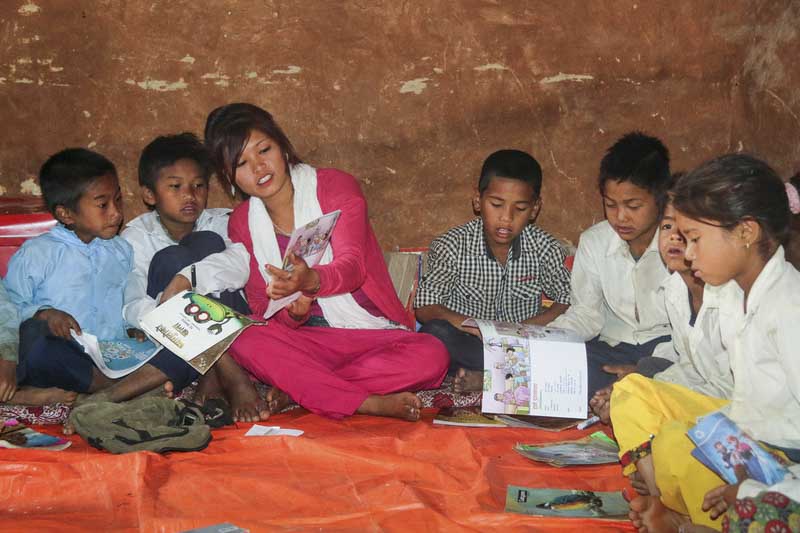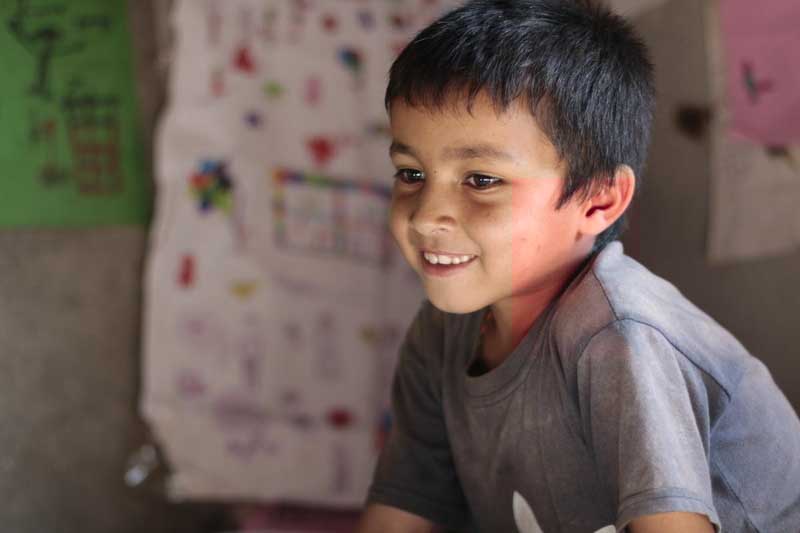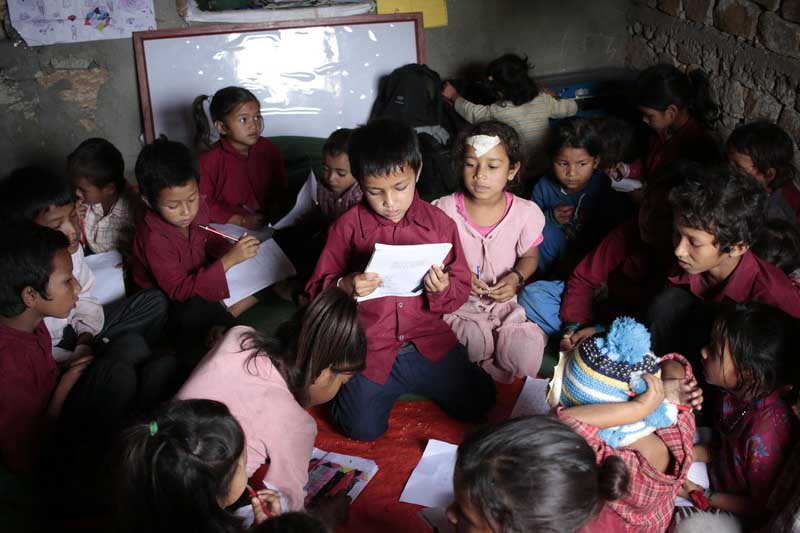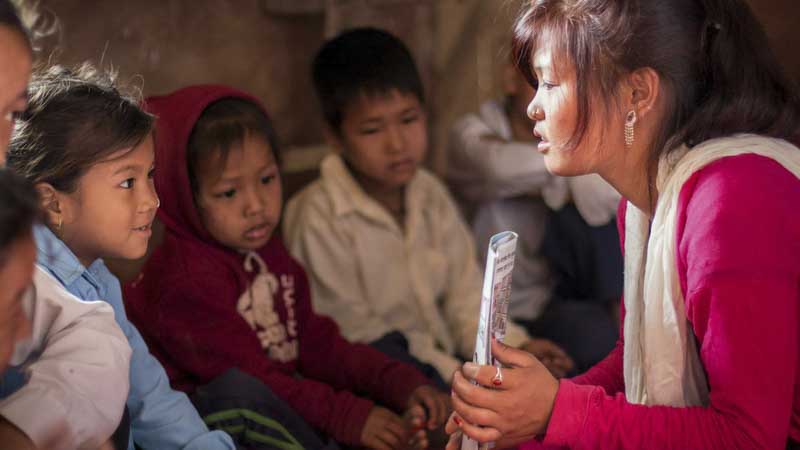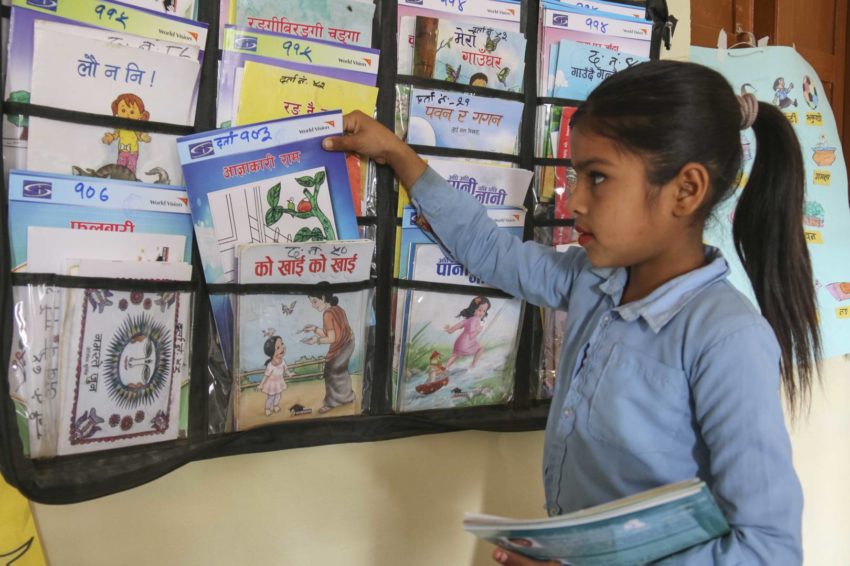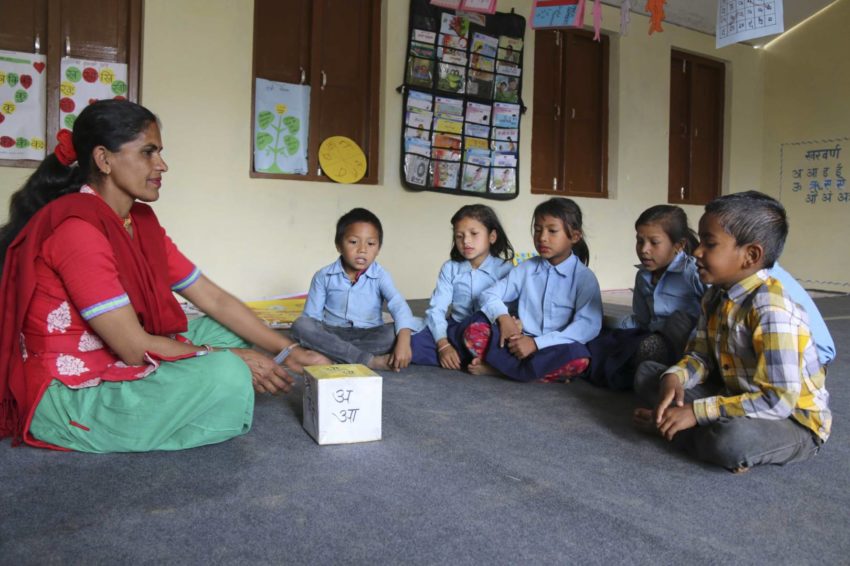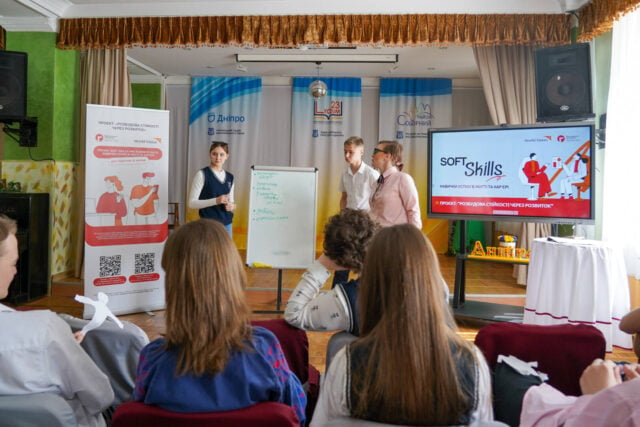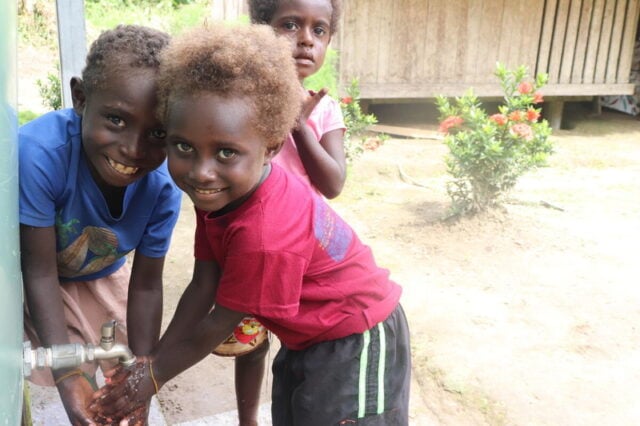Do you remember your favorite book when you were learning to read as a child? Visualize it. It probably had bright, colorful pictures to illustrate the story. Likely your parents read it to you before bed, or you curled up to engross yourself in it in a cozy reading corner of your elementary school classroom with beanbag chairs or plush carpet.
But what if you didn’t have a book like that? Or what if you did but your parents couldn’t read it to you? This is often the reality for children growing up in Nepal. Children have school books that are black and white text and don’t have pictures and colors to engage their senses, and they often don’t have access to storybooks. This has a long-term impact, as only 59.63% of adults in Nepal are literate — only 48.84% for women.
This was the reality for Jhalak, a third-grade student living in Sindhuli, eastern Nepal. He struggled to even read his own name, and many of his friends couldn’t either. Because of the importance of literacy and struggles with it around the world, World Vision began a program to boost literacy and increase reading rates.
There are three main ways World Vision helps to do this: training teachers with more engaging methods, establishing reading camps outside of schools, and helping parents create a nurturing environment at home that encourages reading. The result? In two years, children who participated in the program read 1.5 times better than children who didn’t participate. Nationally, the stats are all moving in the right direction:
- Children who can read with comprehension by sixth grade has increased by 8.1%.
- First grade promotion rates have increased from 78.4% in 2014 to 83.1% in 2016.
- Enrollment rates for sixth through eighth grades increased from 74.6% to 80.2% in two years.
- Children ages 5 to 12 who are out of school has dropped from 15% in 2014 to 11.3%.
Because of people like you who have given to World Vision’s programs, literacy rates are improving across Nepal. Here’s how the program works that’s making it happen.
Improving classrooms
The first part of the program focuses on providing training and materials for teachers to help them better engage children in learning and reading.
World Vision helped train 51 teachers from 20 schools in the Sindhuli district with more creative methods of teaching. Dipak Raj Pokhrel serves as the principal of Shree Mangala School and noted the change in his school after World Vision’s programming help.
“The entire concept of teaching and learning has changed here,” he says. “Now students are taught through interesting approaches such as singing, dancing, and playing.”
One student, Ganga, says, “I like it when I get to sing and dance in the class. I do not feel like I am studying.”
Yet Ganga is learning and showing great signs of improvement through the new teaching methods. Her teacher, Shanta Dahal, says, “Ganga used to be a slower learner in the beginning. She had difficulty learning and memorizing new words, but now she is learning fast after we began teaching her through songs, dance, and games.”
“We only get to see attractive, colorful books in expensive private schools . . . ,” Shanta says. “Because of this, the children also felt discouraged at times. Moreover, the children who come to this school are usually from poor families who cannot afford to pay fees of expensive private schools. But now, with all these new books and learning materials, we feel as if our school is no less than any private school. The quality of education has improved for sure.”
Dipak has noticed a measurable difference across all the classes as well.
“The learning ability and speed of students [learning] has really improved,” he says. “Their grades are gradually improving too.”
During an event at the school, Yadav Prasad Acharya, section officer from the ministry of education, visited and was impressed with the changes he saw.
“A building is only the body of the school, but the real soul is the learning process,” Yadav says. “I am happy World Vision has supported not only the body but also the soul of this school by enhancing the learning process through child-friendly teaching initiatives.”
Reading camps
On the other side of the country in Kailali district, 9-year-old Prem and his parents were visiting his cousins in a neighboring community. But upon arriving, Prem suddenly realized it was Saturday. He had to leave. He asked his cousin to borrow a bike, and he rode all the way back home — so he could attend reading camp.
Reading camps are the second component of the program and provide another space for children to practice reading and further learn outside the formal school environment. Volunteer teachers lead children in songs, drawing, and other activities all designed to help them learn to read. Kids can also make resources to take home that will help them practice learning their letters and words.
Prem doesn’t enjoy attending school, but he loves attending reading camp. So every Saturday, he spends 90 minutes at the program learning from Raj Kumari, the facilitator.
“Even when the 90-minute class finishes, they want to stay more and learn more,” Raj says. “We usually have to stay for a longer time.”
She says when the program started, she had about five students attending, and now she has about 30. Hers is one of more than 442 reading camps across the country. In Kailali alone, more than 2,300 children participate.
Now Prem regularly brings home drawings to decorate his family’s house, and he often teaches his father, Dipendra, the songs he learns at reading camp.
“He can read better; he can draw better,” Dipendra says. “ . . . I am very happy with the changes in him.”
Back in Sindhuli, since 2016, more than 780 children like Jhalak have participated in reading camps. There, he learned how to pronounce words and how to write them from a volunteer teacher named Dor Kumari.
“My reading camp teacher is very loving and patient,” Jhalek says. “I used to be embarrassed when someone would ask me to read, but I don’t feel that way anymore.”
Reading corners
Dor, Raj, and other reading camp teachers spend a lot of time not only with the kids but also educating the whole community to become involved in children’s learning. Each month, the camp teachers meet with parents and formal teachers to discuss how children are improving at school and suggest ways to continue fostering it.
Teachers have conducted more than 150 reading awareness workshops to help parents better understand how to promote literacy at home.
One of those ways is the third component of the program: reading corners in children’s homes. These corners are designated spaces where children can study, practice reading, and where parents can spend time with them and encourage their learning. It gives the children spaces where they can hang the resources they receive and projects they make at reading camp to create a consistent study space. In Sindhuli, families created more than 140 reading corners to bolster learning at home. Jhalak’s mom, Chitra Kumari, saw a difference in her children after creating a reading corner.
“It has been very beneficial, as my children love to study surrounded by interesting reading materials that they can point to and read,” she says. “I try to sit with Jhalak and his sister every evening when they are studying in the reading corner.
“In a matter of months, their reading skills have improved. I am very proud of my son.”
And Jhalak isn’t a one-off example. On top of the national stats, in Jhalak’s district alone, the number of children who can read with comprehension by sixth grade has improved from 56.4% in 2014 to 71.4% in 2016. And numbers are similar in Prem’s community as well, going from 33.3% in 2014 to 49.4% in 2017.
As this literacy programming continues, more children will come to cherish the joy of reading and the opportunities it presents as they grow up.
Barun Bajracharya and Nissi Thapa of World Vision’s staff in Nepal contributed to this story.
